Chapter 11 : vertebrae , ribs and sternum
1/37
There's no tags or description
Looks like no tags are added yet.
Name | Mastery | Learn | Test | Matching | Spaced |
|---|
No study sessions yet.
38 Terms
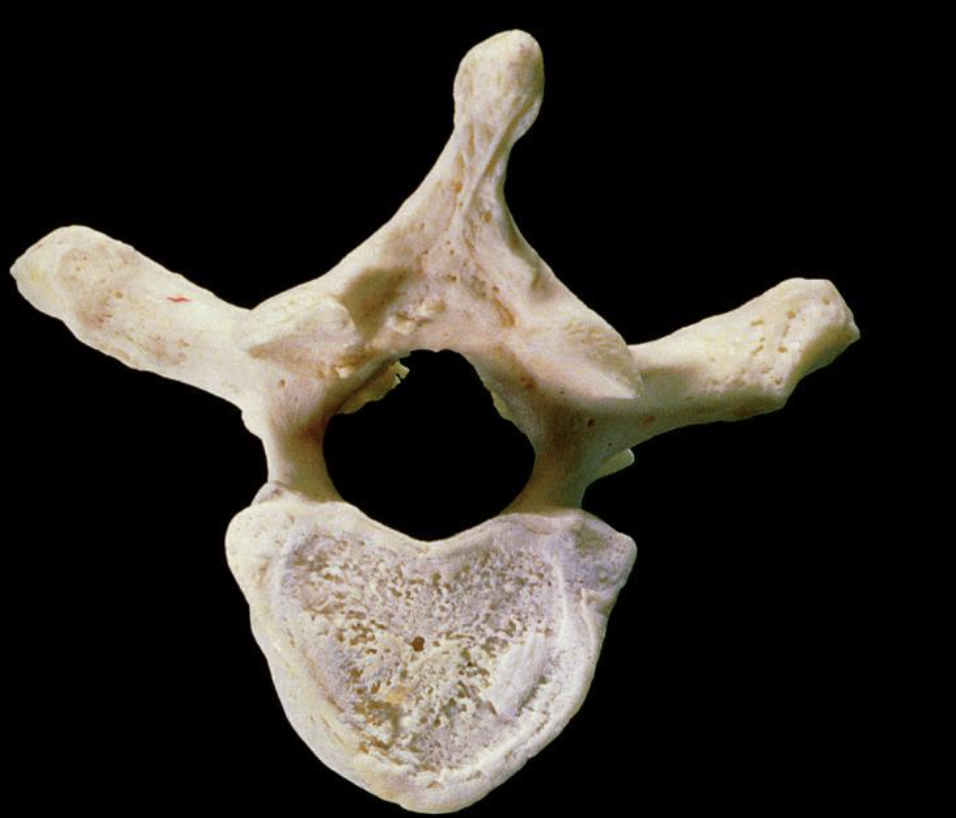
What is this? In an adult there are black vertebrae. What do those columns do?
Vertebra , 26 , Protect the spinal cord and anchors points for numerous muscles

What does the circle indicate?
The body of the vertebra
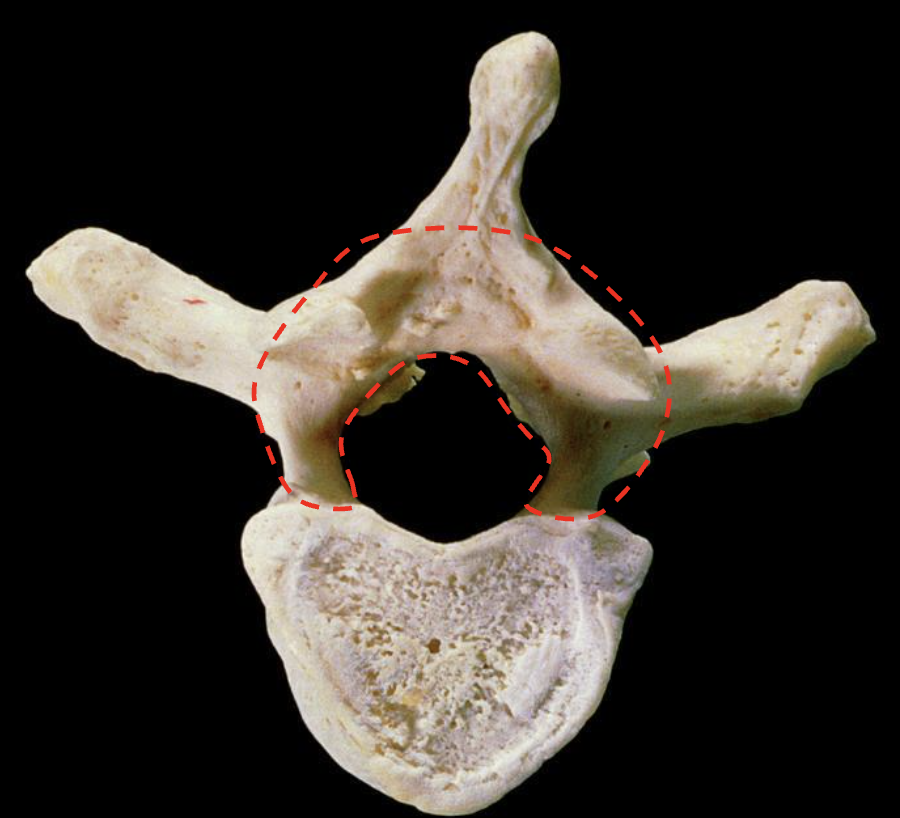
What does the circle indicate?
Vertebral arch

What is this?
vertebral foramen

what does the circle indicate ?
Pedicle - hold the body

What is this ?
Laminae - attaches to the pedicle
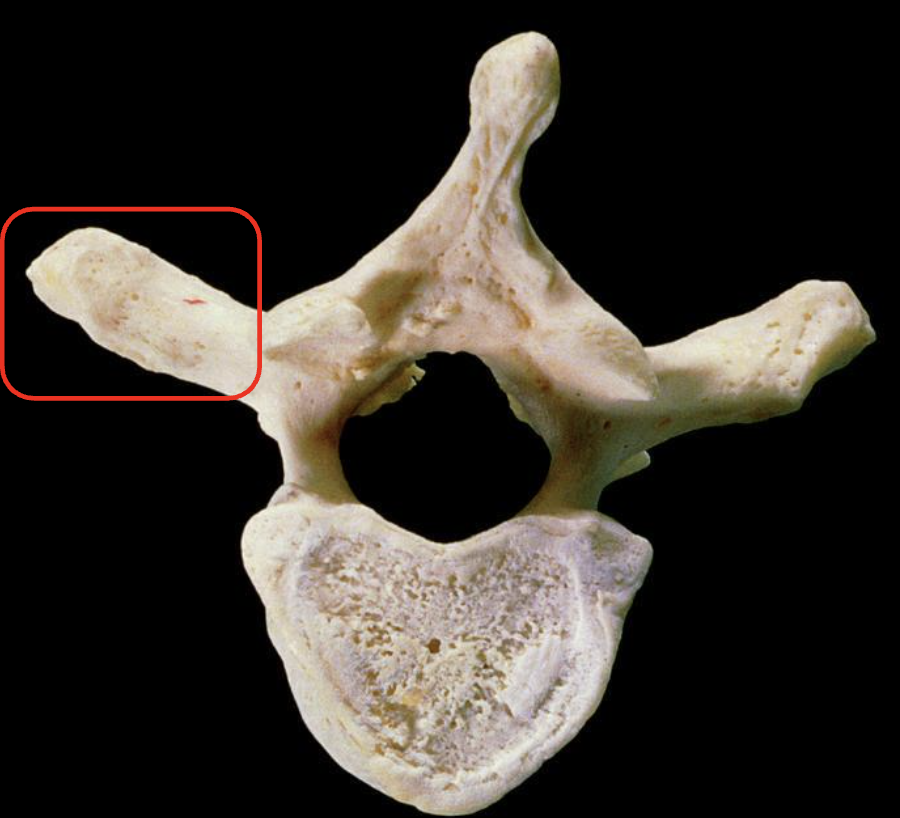
What does the circle indicate?
Transverse process

Lumbar vertebra : (superior articular process—blue) (Inferior Articular Process - red). Allows minimal movement for stability of vertebral

What do the arrows represent ?
Superior and inferior facets on the superior and inferior articular process
This is where the process actually happens and is also lined by hyaline cartilage

what does the arrow represent ?
The inferior notch , when articulated becomes intervertebral foramen.

Thoracic Vertebra
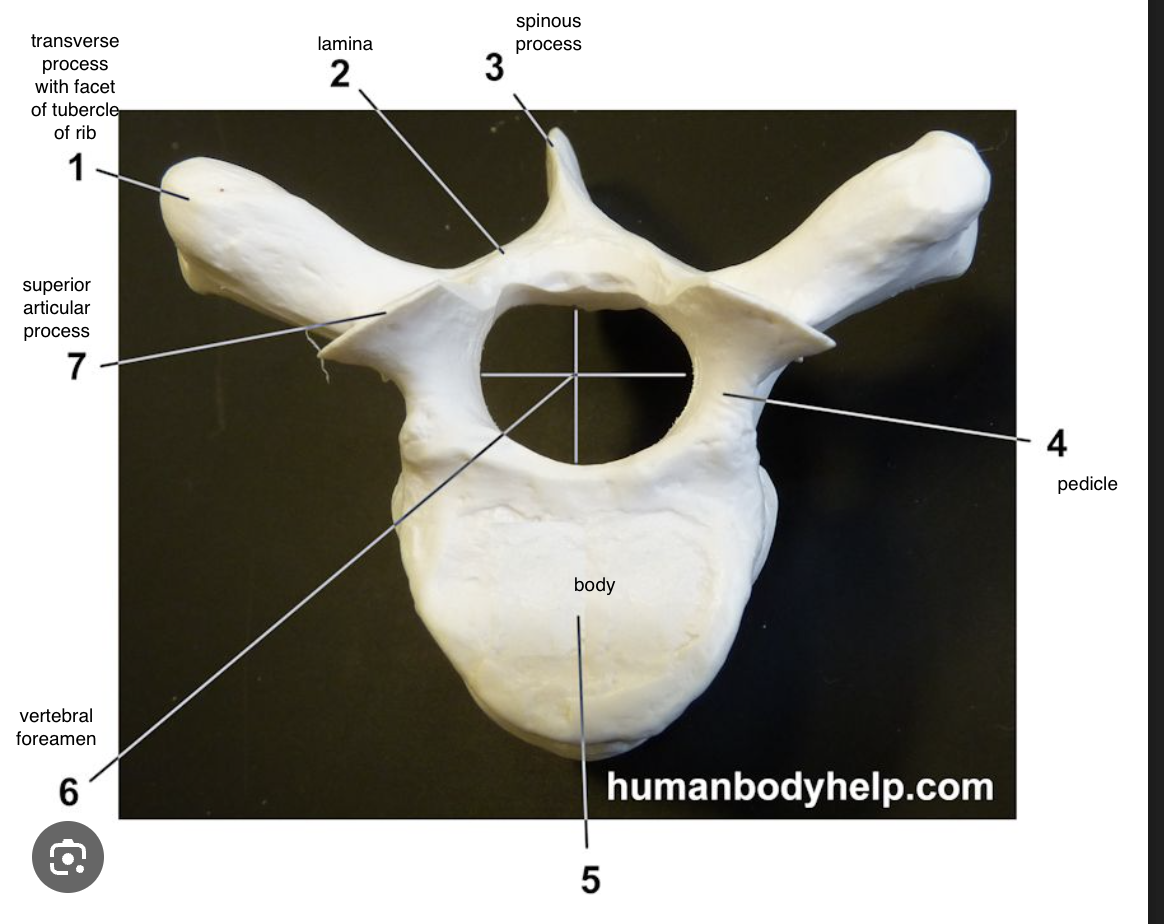
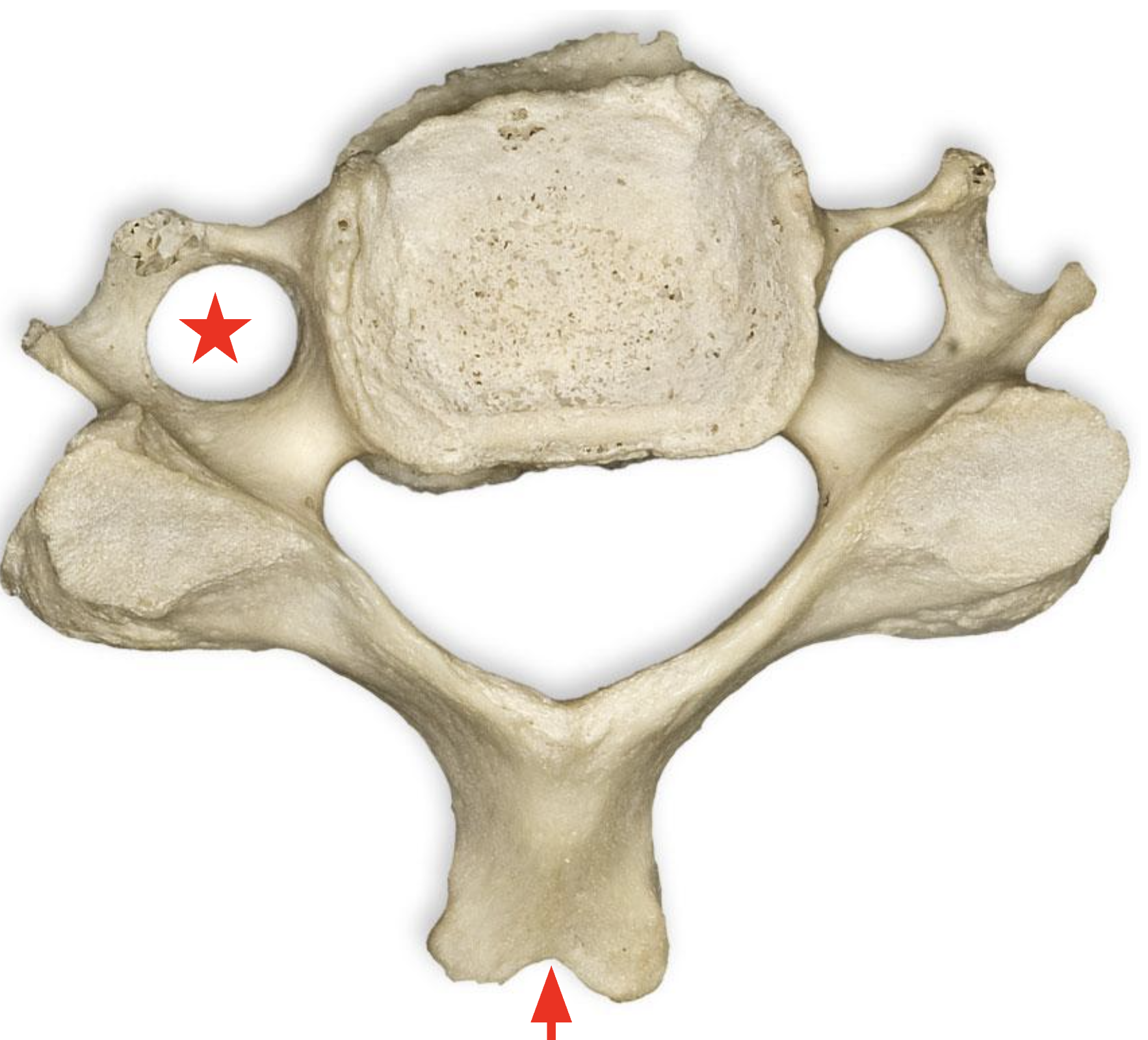

1st cervical vertebra “atypical” : no body , posterior and anterior arch “posterior and anterior tubercle of the atlas”
The arrow indicates superior articular facets, which articulate with the occipital condyle of the skull
“Atlas”—Greek word holding globe of the skull
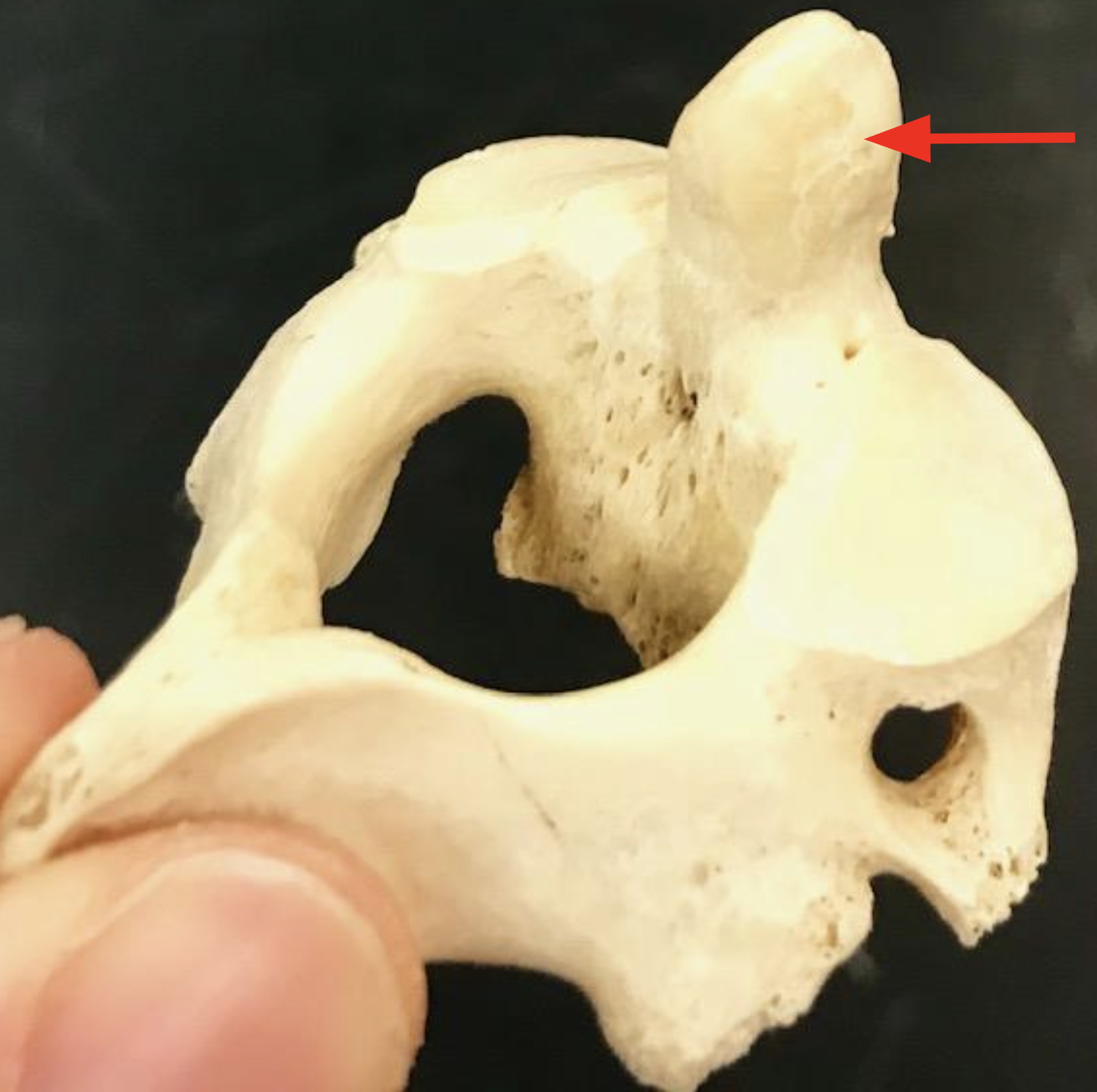
C2 second cervical vertebra know as Axis , these is a structure in the middle named “dens,” meaning tooth
“dens” allocates with anterior arch that forms a rotational movement called “no motion,” giving the name “axis”
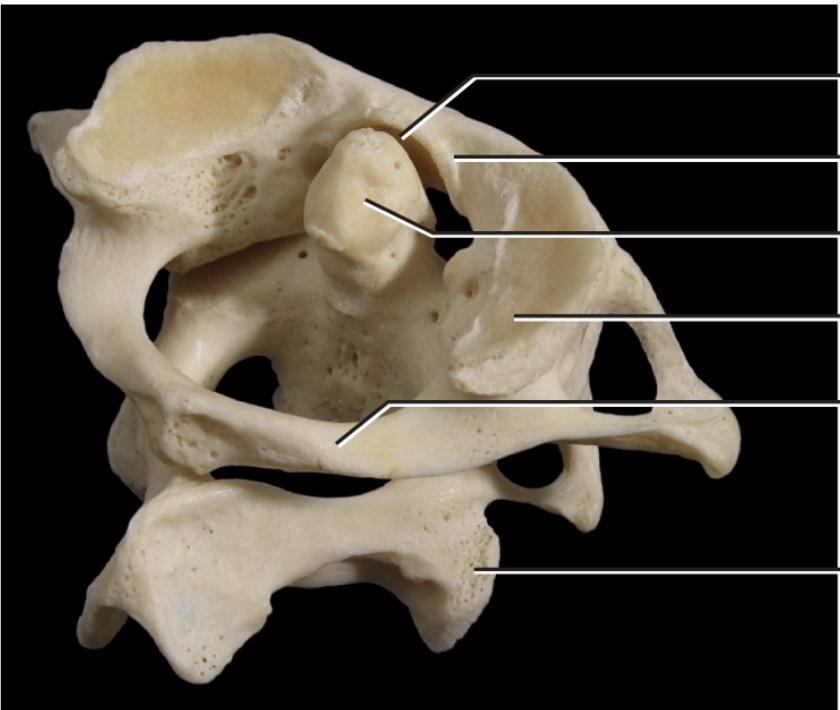

Lumbar vertebrae
short and stubby compared to cervical vertebrae

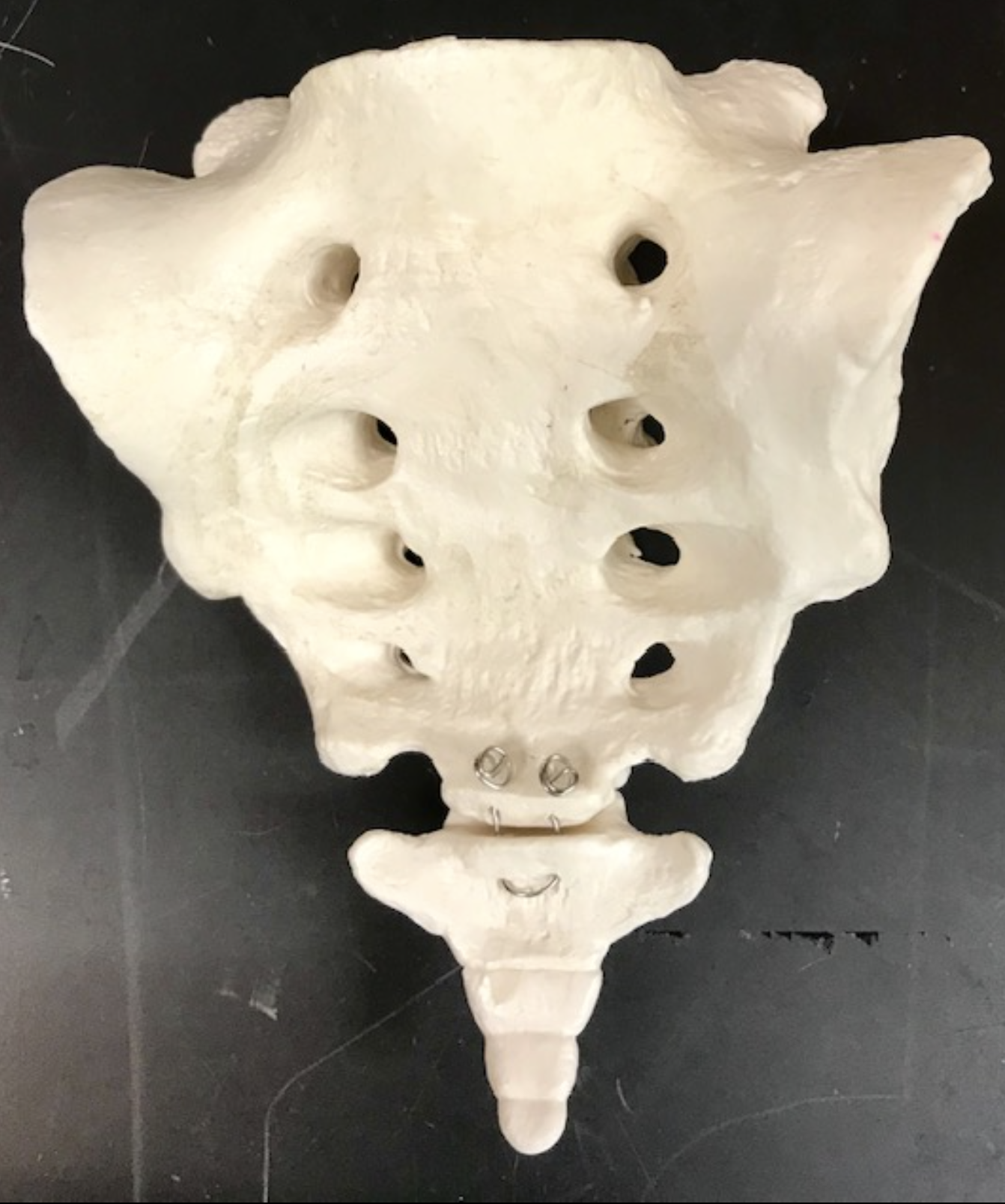
Anterior part of the pelvic containing Sacrum and Coccyx
Sacrum Is a single bone fused together by 5 sacral vertebrae; the fusion is usually finished between the age of 25 and 30
The coccyx contains 4 coccygeal vertebrae (occasionally 3 or 5 )
They are not fused together; they are separated by fibrocartilaginous intervertebral discs

Sacral foramina allows passage for spinal nerves and blood vessels

Sacral promontory—opening of pelvic cavity
vision piece of land extending into body of water
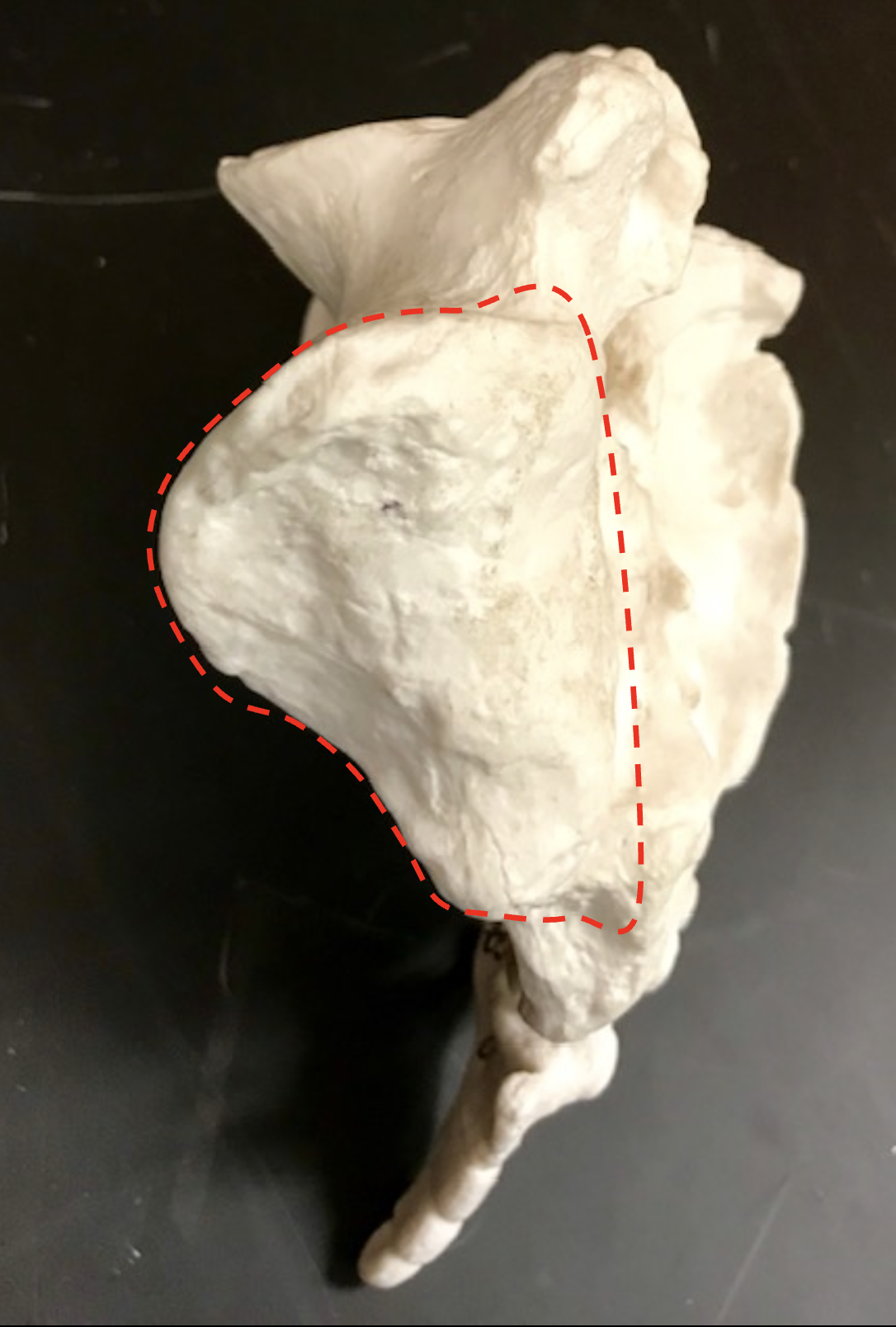
auricular Surface “little ear”
Articulates with the iliac region of the hip bone and forms a joint named “sacroiliac joint.”
both the surfaces are rough to increase stability of the joint and slight gliding motion
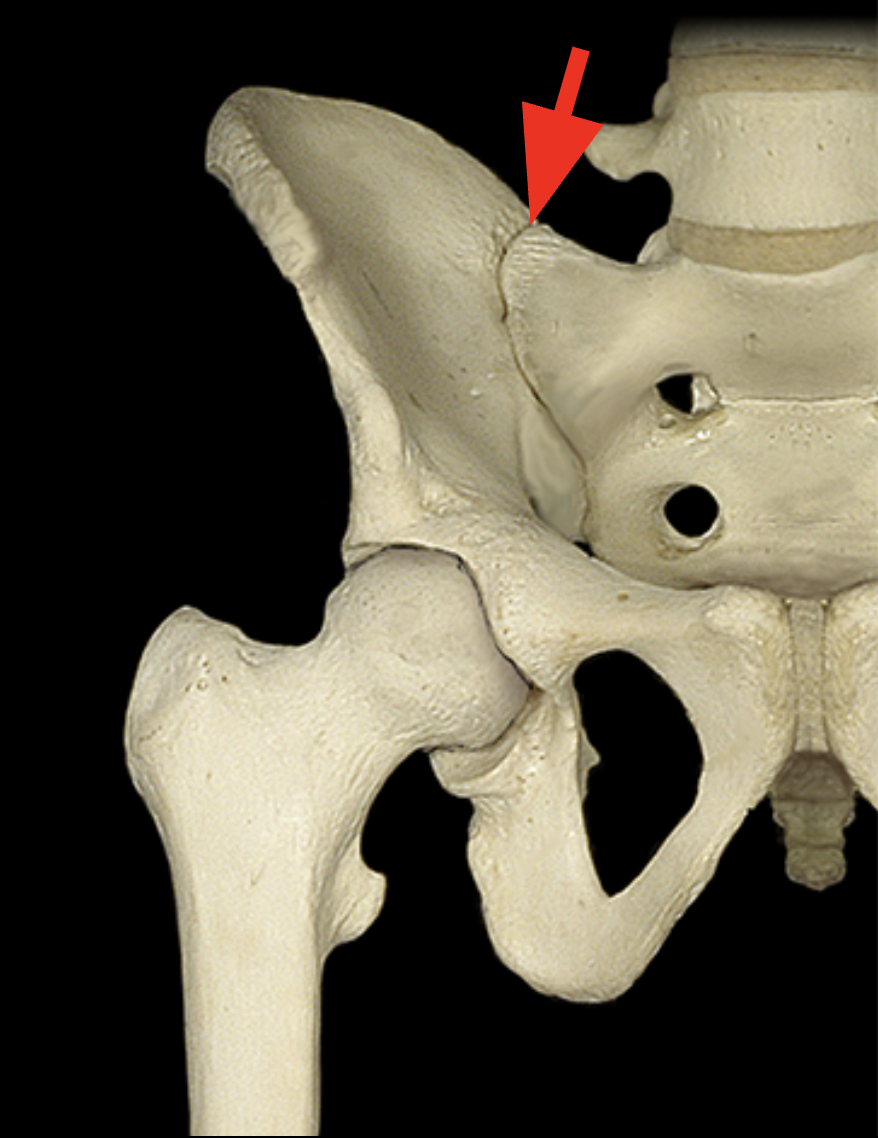

Thoracic cage protects the lung , the heart and other anchoring muscles
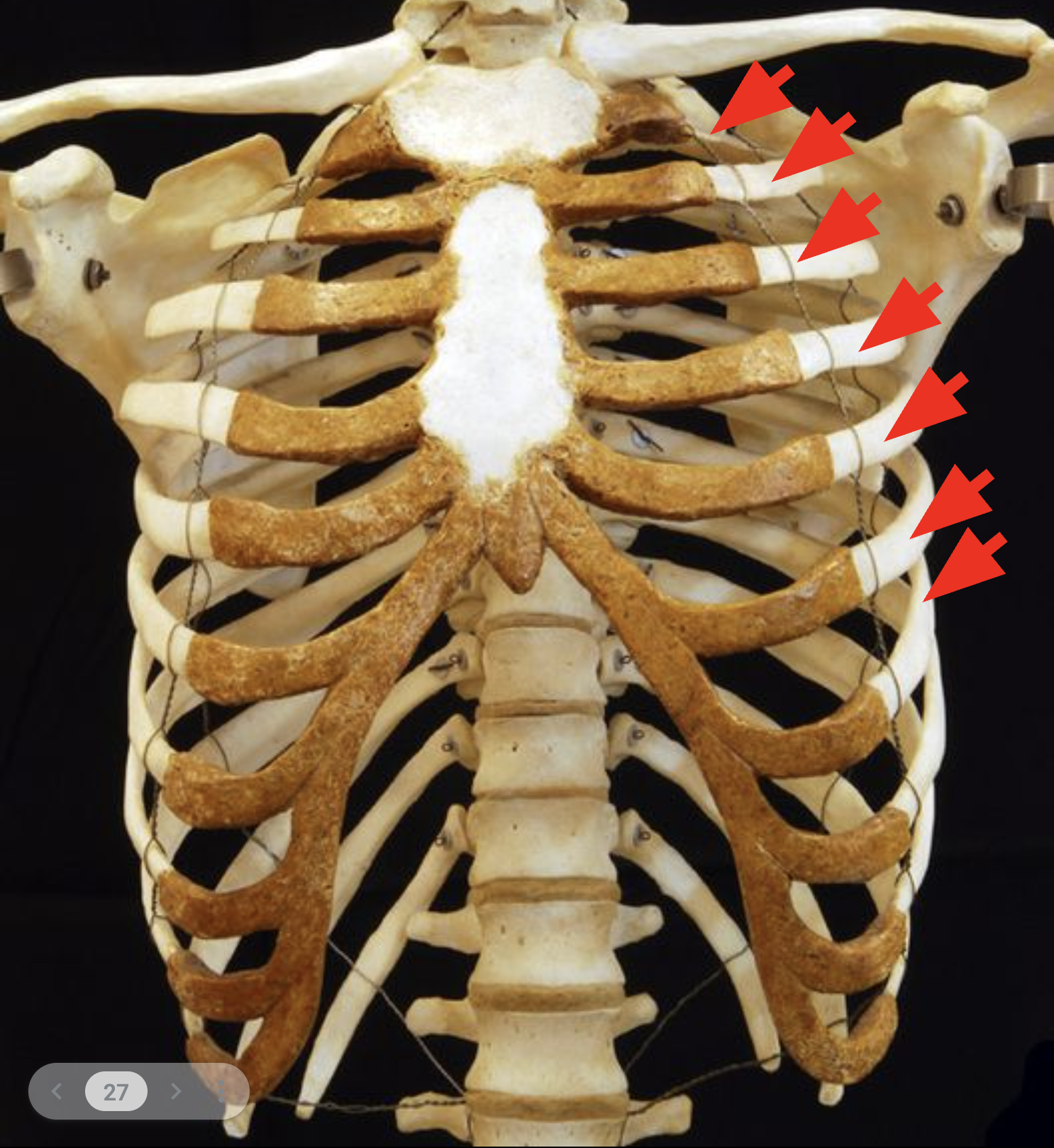
First 7 ribs “true ribs,” it has unshared piece of costal cartilage attaching it to the sternum

“False ribs” last 3 ribs that share a costal cartilage attaching to the sternum
“Floating ribs” lack costal cartilage entirely also called false ribs
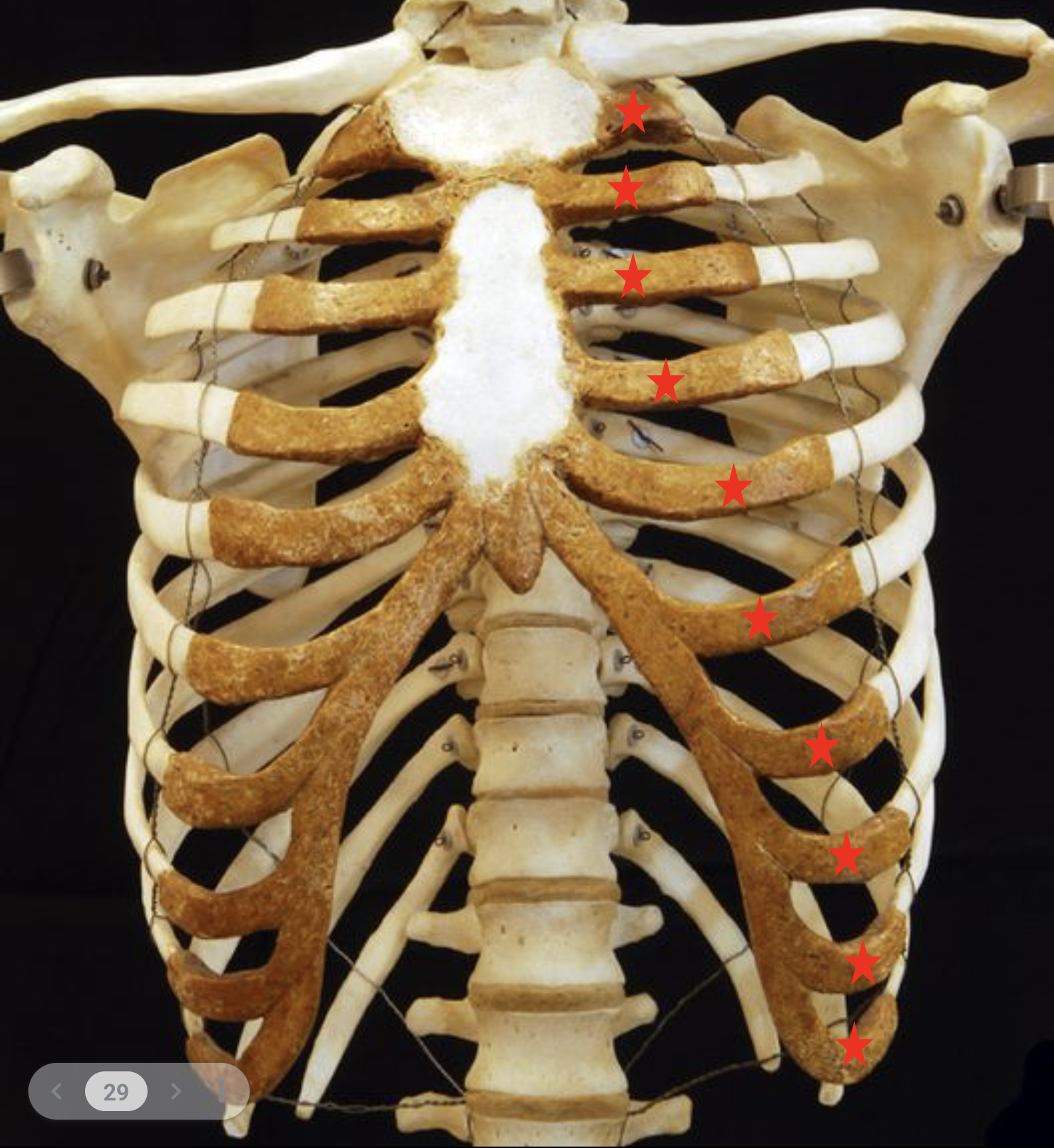
The costal cartilage is made of hyaline cartilage, allowing slight movement of ribs and sternum.


Manubrium of the sternum , joins with the clavicle and first pair of ribs
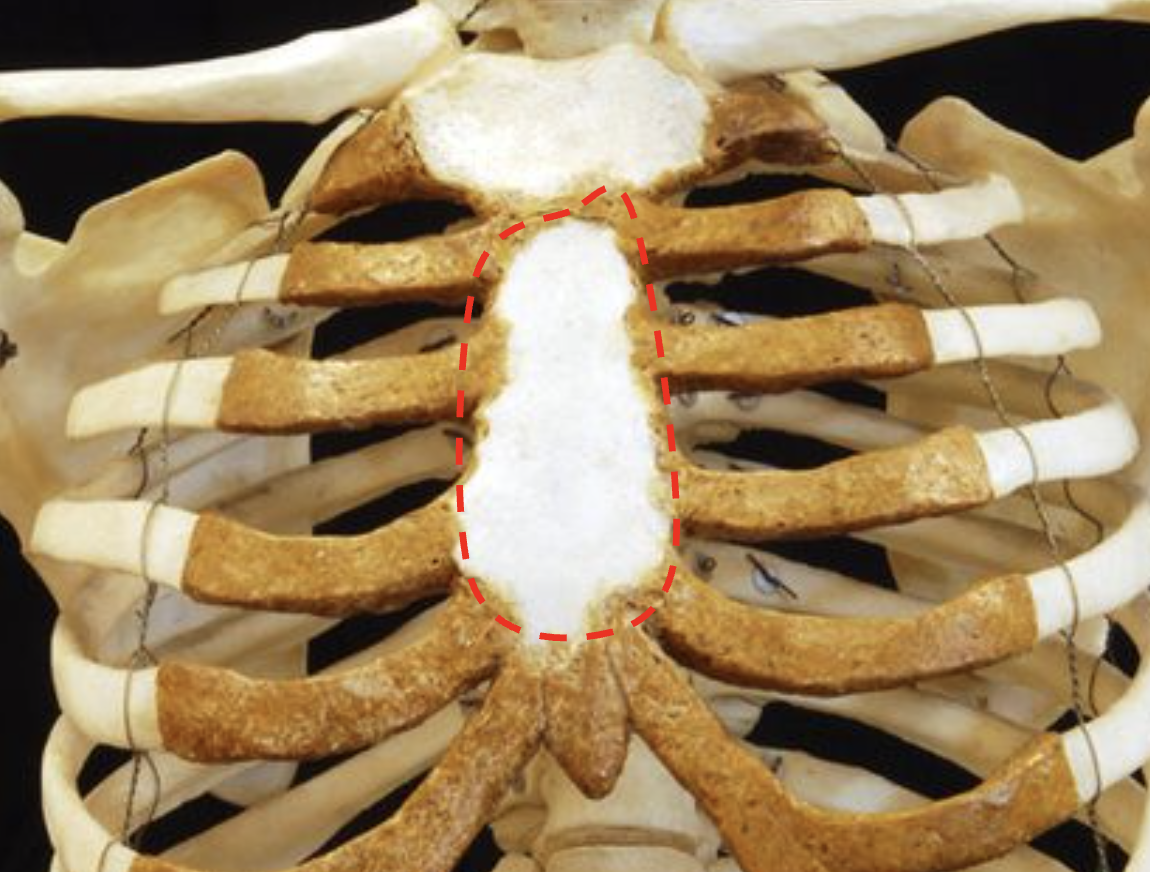
Body of the sternum : articulates with par 2-7 of the ribs
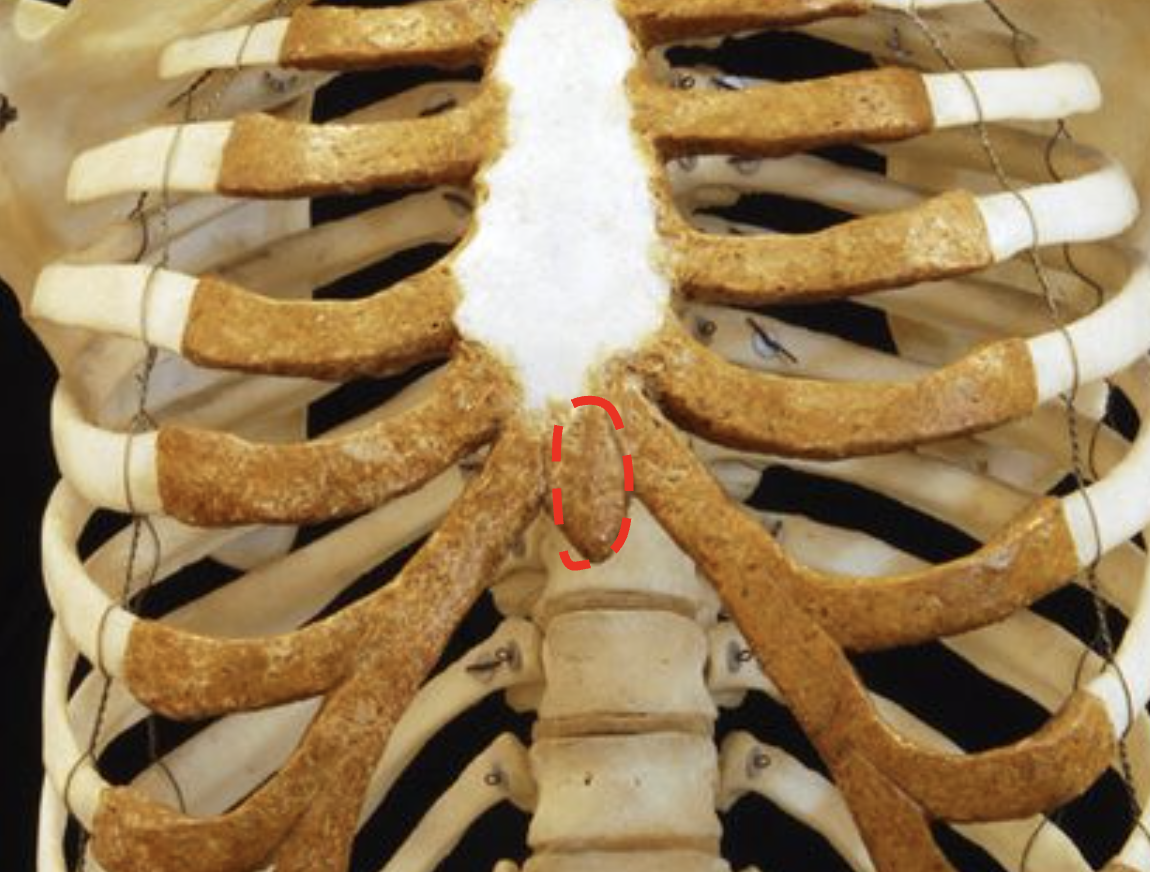
xyiphoid process of the sternum - attachment for abdomen muscles .